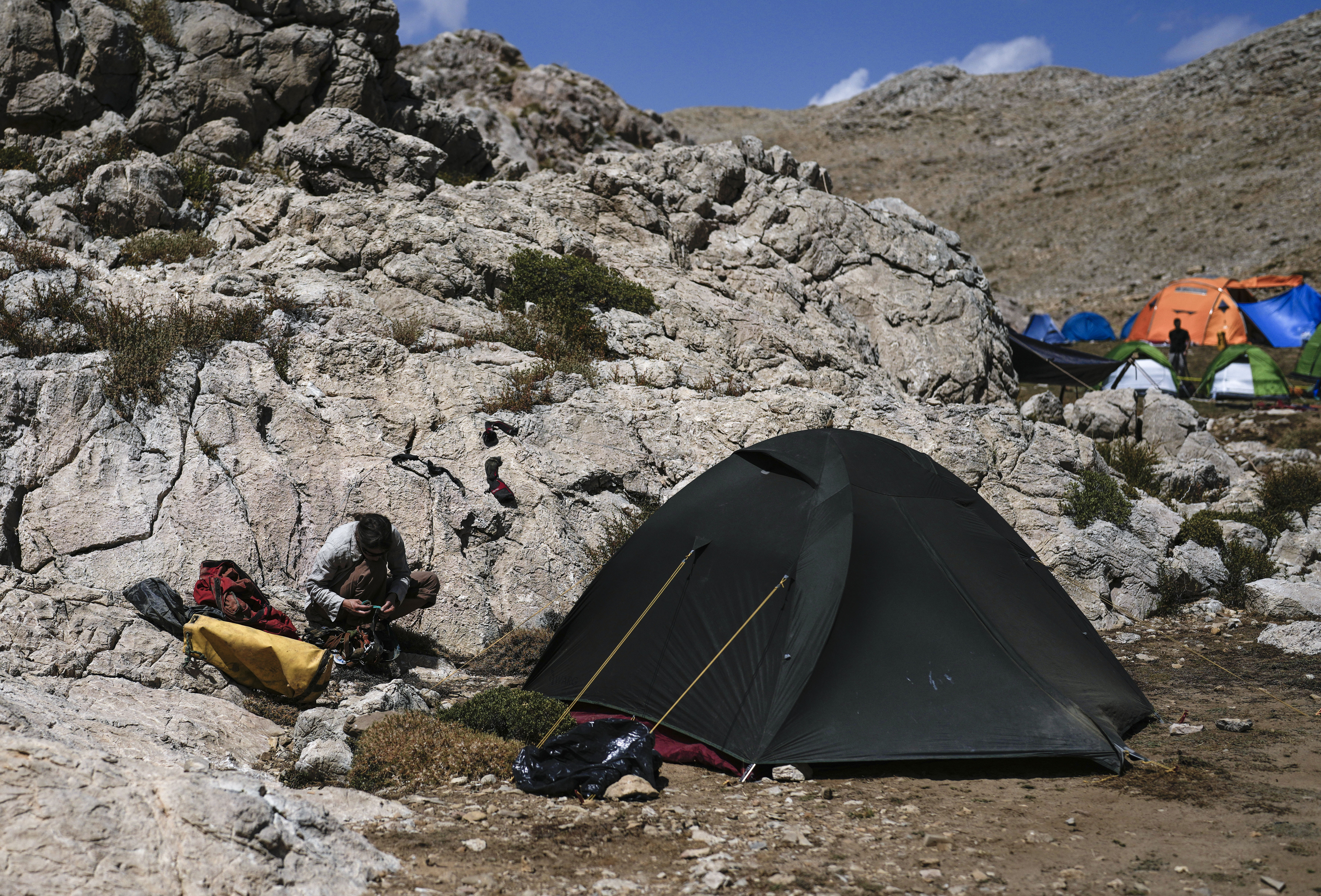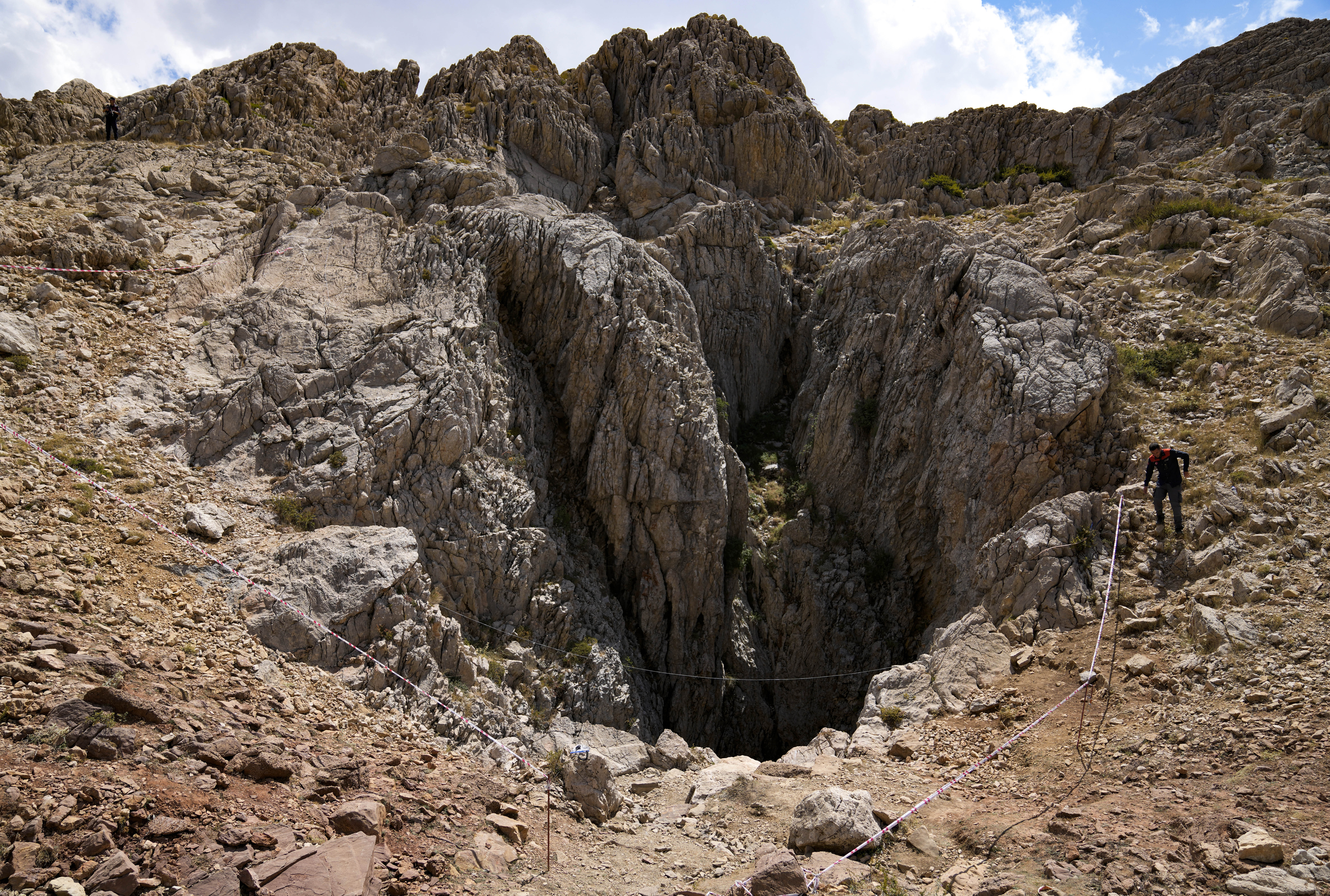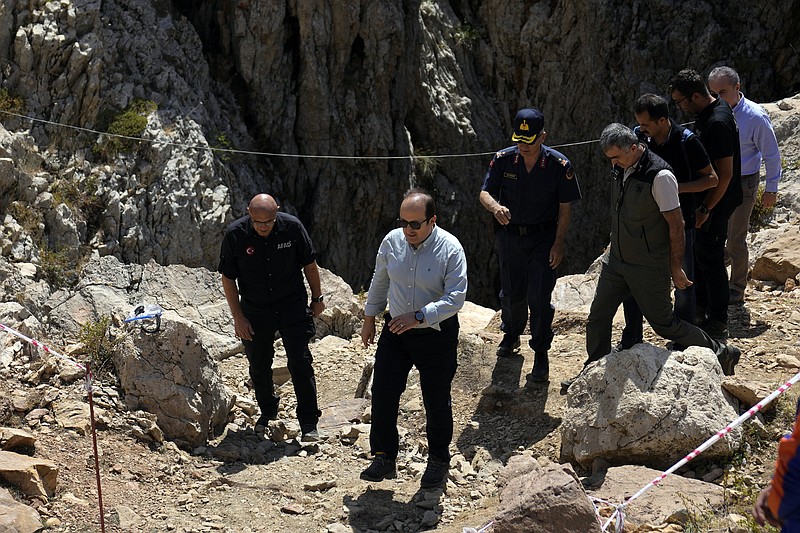TASELI PLATEAU, Turkey -- Rescue teams began the arduous process Saturday of extricating an American researcher who became seriously ill while he was 3,000 feet below the entrance of a cave in Turkey, officials said.
It could take days to bring Mark Dickey to the surface since rescuers anticipate that he will have to stop and rest frequently at camps set up along the way as they pull his stretcher through the narrow passages.
"This afternoon, the operation to move him from his camp at [about 3,400 feet] to the camp at [about 2,900 feet] began," Turkey's Disaster and Emergency Management Directorate, told The Associated Press.
The 40-year-old experienced caver began throwing up Sept. 2 because of stomach bleeding while on an expedition with a handful of others in the Morca cave in southern Turkey's Taurus Mountains.
Rescuers from across Europe rushed to the cave to help Dickey and to extract him, including one Hungarian doctor who treated him inside the cave Sept. 3. Doctors gave Dickey IV fluids and 1 gallon of blood inside the cave, officials said. Teams made up of a doctor and three or four others take turns staying with the American at all times.
There are 190 personnel from eight countries assisting in the rescue effort, including doctors, paramedics and experienced cavers, Mersin Gov. Ali Hamza Pehlivan told the media Saturday. He said 153 of them were search-and-rescue experts.
"We have received information that his condition is getting better, thanks to medical intervention. He has been in stable condition as of yesterday," he said.
Speaking with the AP before rescue operations began, Recep Salci, head of the Disaster and Emergency Management Directorate's search-and-rescue department, said the rescue will depend on Dickey's condition.
Gallery: Teams work to rescue ill American from Turkish cave
"If he feels well, we will assist him, and he will come out [of the cave] fast. But if his condition worsens, we will have to bring him up on a stretcher." He said bringing Dickey up on a stretcher could take up to 10 days.
Yusuf Ogrenecek of the Speleological Federation of Turkey says one of the most difficult tasks of cave rescue operations is widening the narrow cave passages to allow stretcher lines to pass through at low depths.
"Stretcher lines are labor-intensive and require experienced cave rescuers working long hours," Ogrenecek said, adding that other difficult factors range from navigating through mud and water at low temperatures to the psychological toll of staying inside a cave for long periods of time.
In Rome, Federico Catania, the spokesman for Italy's National Alpine and Speleological Rescue, described the cave as one of the deepest in the world.
"The cave is made up of many vertical shafts, so many sections that are extremely vertical with few horizontal sections where [the] rescuers are setting up temporary camps," he said.
Turkish authorities made a video message available that showed Dickey standing and moving around Thursday. While alert and talking, he said he was not "healed on the inside" and needed a lot of help to get out of the cave. He thanked the caving community and the Turkish government for their efforts to rescue him.
 A rescuer works on her hiking gear in the European Cave Rescue Association (ECRA) members, camp next to the Morca cave during a rescue operation near Anamur, south Turkey, Saturday, Sept. 9, 2023. American researcher Mark Dickey, 40, who fell ill almost 1,000 meters (more than 3,000 feet) below the entrance of a cave in Turkey, has recovered sufficiently enough to be extracted in an operation that could last three or four days, a Turkish official was quoted as saying on Friday. (AP Photo/Khalil Hamra)
A rescuer works on her hiking gear in the European Cave Rescue Association (ECRA) members, camp next to the Morca cave during a rescue operation near Anamur, south Turkey, Saturday, Sept. 9, 2023. American researcher Mark Dickey, 40, who fell ill almost 1,000 meters (more than 3,000 feet) below the entrance of a cave in Turkey, has recovered sufficiently enough to be extracted in an operation that could last three or four days, a Turkish official was quoted as saying on Friday. (AP Photo/Khalil Hamra) A Turkish officer walks next to the Morca cave during a rescue operation near Anamur, south Turkey, Saturday, Sept. 9, 2023. American researcher Mark Dickey, 40, who fell ill almost 1,000 meters (more than 3,000 feet) below the entrance of a cave in Turkey, has recovered sufficiently enough to be extracted in an operation that could last three or four days, a Turkish official was quoted as saying on Friday. (AP Photo/Khalil Hamra)
A Turkish officer walks next to the Morca cave during a rescue operation near Anamur, south Turkey, Saturday, Sept. 9, 2023. American researcher Mark Dickey, 40, who fell ill almost 1,000 meters (more than 3,000 feet) below the entrance of a cave in Turkey, has recovered sufficiently enough to be extracted in an operation that could last three or four days, a Turkish official was quoted as saying on Friday. (AP Photo/Khalil Hamra)